Yoga Poses for 2: Partner Yoga Poses to Strengthen Your Bond and Practice Together
Explore fun and challenging yoga poses for two! Partner yoga helps build trust, enhance flexibility, and connect on a deeper level. Try these poses for a stronger, more enjoyable practice.
Introduction:
Yoga isn’t just a solo practice—partner yoga (or yoga for two) allows you to deepen your connection, build trust, and strengthen your body together. Whether you’re practicing with a partner, friend, or family member, these poses are a great way to enhance flexibility, communication, and balance while having fun.
This guide will introduce you to some of the best partner yoga poses for two, highlighting how they can improve flexibility, alignment, and trust between you and your practice partner.
If you and your partner try any of these awesome poses, we’d love to see your moves! Don’t forget to tag us on Instagram @home.of.yoga so we can cheer you on and for a chance to be featured on our website!
. Let’s spread the yoga love—one epic pose at a time! 💛
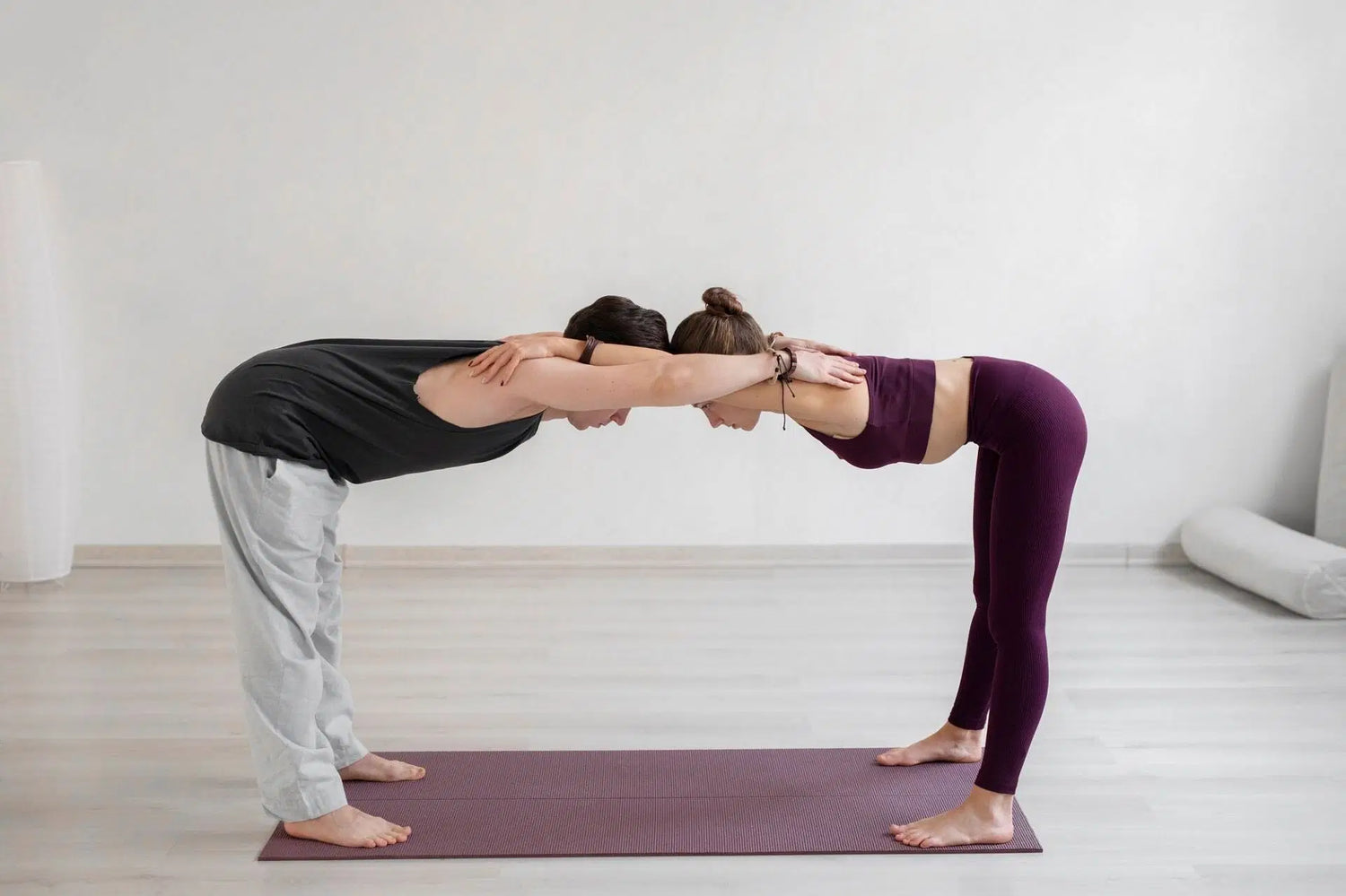
Partner Forward Fold
How to Do It:
Both partners stand facing each other. Hold each other's wrists or hands. Step back so there’s tension in the arms, then simultaneously fold forward at the hips. Keep your backs straight and engage your core.
Benefits:
Stretches the hamstrings, calves, and lower back, while also strengthening your core.
Partner Tip:
Keep a slight bend in your knees to prevent strain on your back.
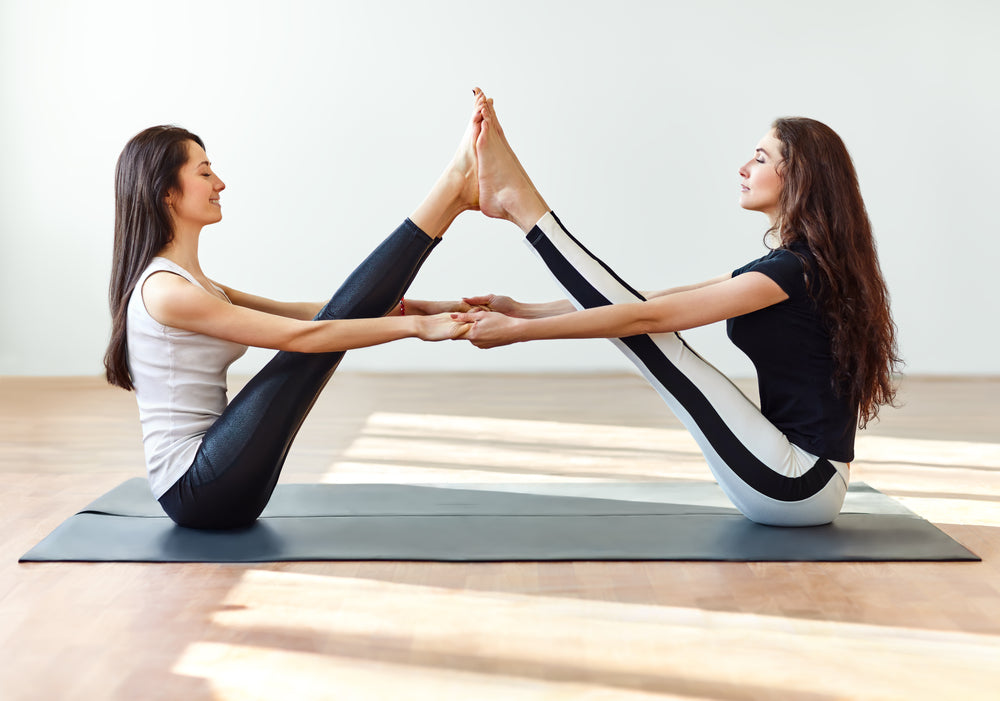
Partner Boat Pose
How to Do It:
Sit facing your partner with your knees bent and feet flat on the floor. Hold each other’s wrists and lift both of your feet off the floor, balancing on your sit bones. Extend your legs and engage your core to create a "V" shape with your bodies.
Benefits:
Strengthens the core, hip flexors, and legs.
Partner Tip:
Focus on engaging the core and keep a straight back to avoid leaning back too much.
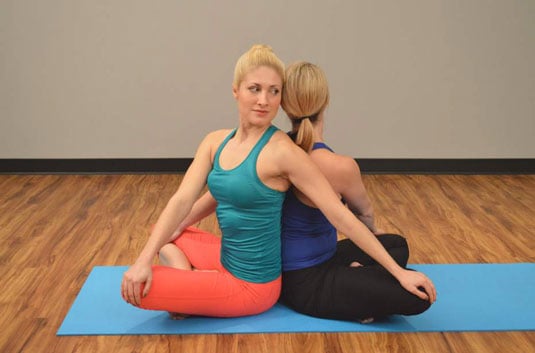
Partner Seated Twist
How to Do It:
Sit facing your partner with your legs stretched wide apart. Reach your right hand to your partner’s left knee or thigh, while placing your left hand behind you for support. Your partner mirrors the movement. Inhale to lengthen your spine, then exhale and twist your torso to the left, looking over your shoulder. Hold for a few breaths, then switch sides.
Benefits:
Improves spinal flexibility, deepens the stretch, and enhances posture. It also helps release tension in the back and obliques while promoting relaxation.
Partner Tip:
Move slowly and breathe deeply to maintain stability in the twist. For extra support, gently pull against each other’s knee to deepen the stretch.
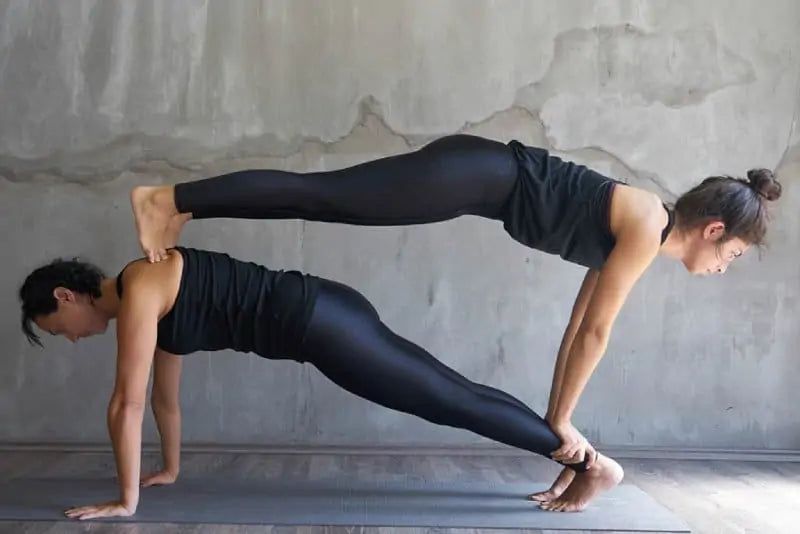
Flying Double Plank
How to Do It:
One partner starts in a strong high plank with hands and feet firmly on the ground. The second partner places their hands on the first partner’s ankles and carefully steps their feet onto the first partner’s shoulders, forming a stacked plank position. Both partners engage their core, arms, and legs to maintain balance and stability.
Benefits:
Builds core strength, enhances balance, and improves upper body endurance. It also requires trust and coordination between partners, making it a fun challenge.
Partner Tip:
The base should keep their arms and shoulders strong and stable, while the flyer should engage their core and distribute their weight evenly. Communication is key for a smooth transition in and out of the pose!
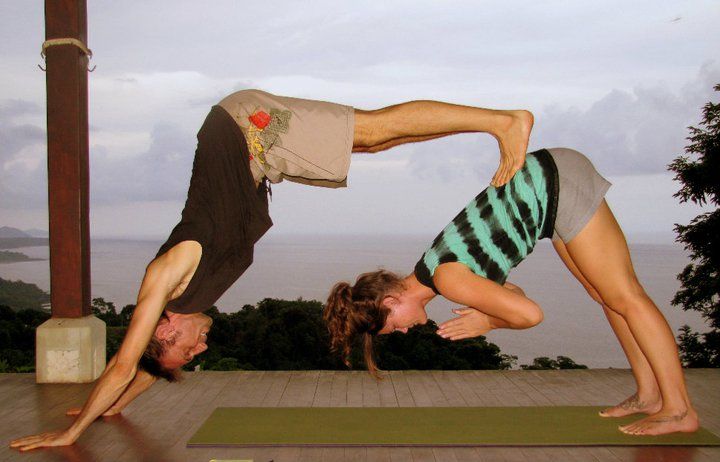
Downward Facing Dog Half With No Hands
How to Do It:
One partner gets into Downward Facing Dog, grounding their feet and lifting their hips high. The second partner stands behind them, places their feet on the lower back or hips of the Down Dog partner, and slowly leans forward, lifting their own hands off the ground into a no-hands balance position. Both partners engage their core and legs to maintain stability.
Benefits:
Builds core strength, balance, and trust between partners. It also enhances flexibility in the hamstrings and improves body awareness.
Partner Tip:
The base should keep legs strong and steady, while the flyer engages their core and finds balance before lifting their hands. Communicate and adjust weight carefully for stability.
